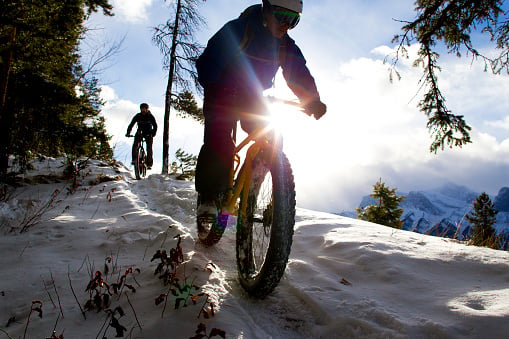Winter comes, and some not-so-secret tips can help us find our way in the cold, even if many of us don't think the winter months are ideal for biking. Warm clothing, Cycling shoes, a commitment to exploration, and a can-do attitude are great places to start.
1. Planning Your Trip
Any bikepacking journey must begin with (excitement-filled!) planning. Ride It's simple to find loops at lower elevations to avoid those snow-covered mountain passes using GPS and route mapping apps like Gaia and Strava. Routes can be found on websites like Bikepacking.com, which also provides useful beta like camping and resupply advice. Explore areas that might be too hot to ride in the summer now, and go back and take a fresh look at routes you've already taken. I'm referring to valleys, deserts, and routes that follow mountain ranges rather than going up and over them.
2. What To Pack
When it comes to packing for that weekend loop in the summer, less is more. It's a different story in the winter and late fall; you'll need to strike a balance between packing light enough garments to be warm and without overdoing it. To make riding more comfortable, wear warm socks or winter boots,
All Terrain Cycling & Bike Shoes, gloves, and a bicycle cap. You'll need additional insulating layers off the bike, such as a toasty beanie, an insulated jacket, and thick gloves. A few merino wool items also go a long way, such as baselayers, extra layers for sleeping in, and liner gloves to wear under thicker shell gloves.
To stay warm when camping, replace your summer sleeping bag with a winter-rated one. We like a 0–15 degree bag, however, your location's environment will determine this.
3. How To Pack
The already accurate bikepacking packing plan may become more difficult with additional gear. This much stuff may require some riders to transition from the seat, frame, and handlebar bags to panniers with a greater payload. The same packing guidelines still apply: keep day-to-day necessities within reach, have food on hand, and place heavier stuff low and in the middle of the bike (like in a frame bag). It can be easier to regulate your body temperature while riding if you have available extra clothing if your route includes a lot of climbs and descents. It is simple to add or remove gloves and a wind jacket as needed throughout the day if you keep them in your pocket and stem bag, respectively.
4. Find Your Refuge
It's a smart idea to have a warm location to rest depending on the weather and how far you wish to travel. This might be a mercantile in Montana, a hot spring in Nevada, or a coffee shop by a trail in Wisconsin. Embrace yourself! When you're 35 miles into a day with more than 60 miles, having a break to look forward to makes the trip that much more enjoyable. You deserve it. Always have a backup plan in place. If this will be your first experience with winter overnights, look into nearby motels as a backup (warm-up) alternative in case the weather changes. In the winter, there is no right or wrong way to leave.
Others Also Read:
>>>Effective Indoor Cycling Footwear for Comfort and Breathability

